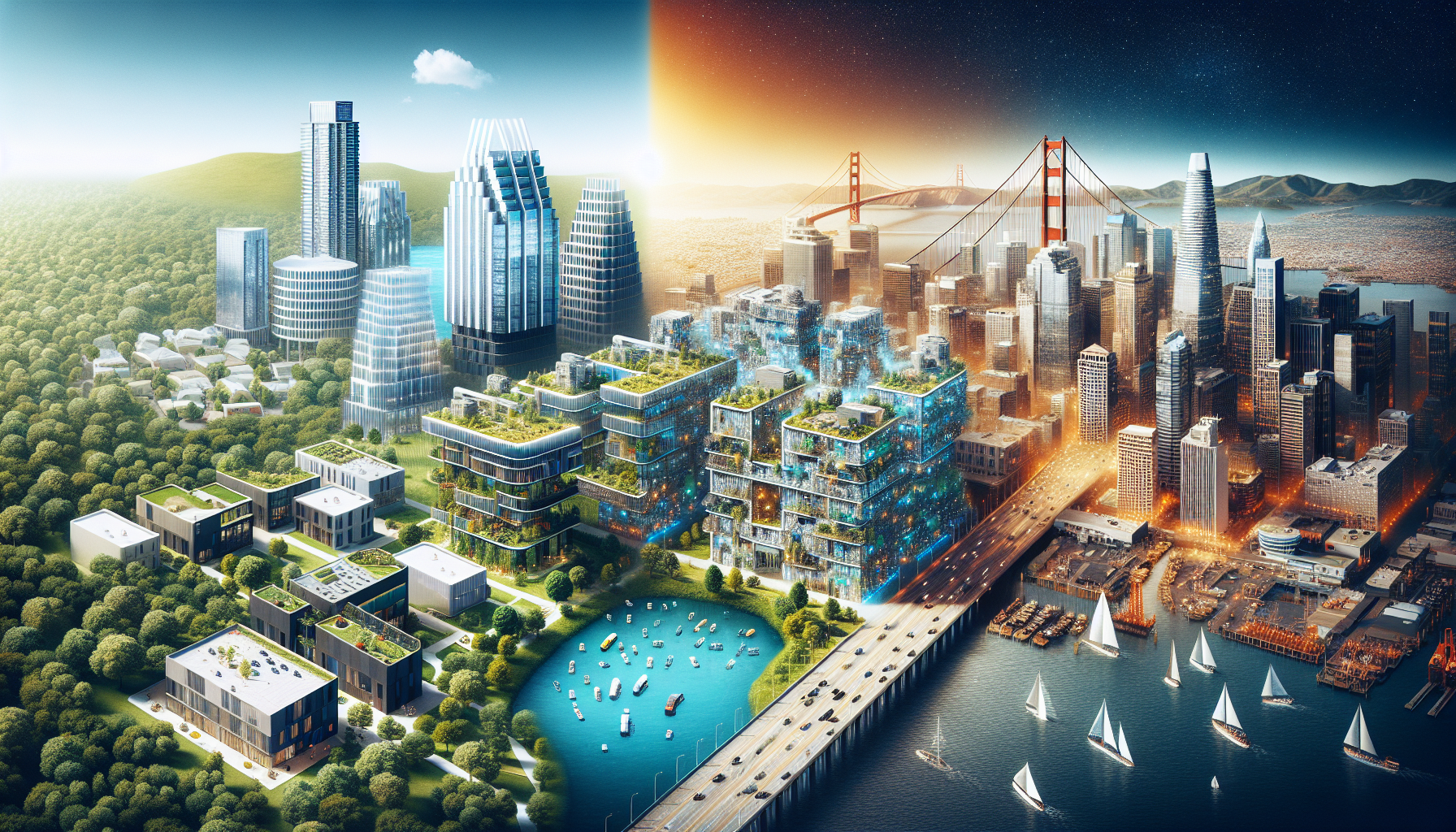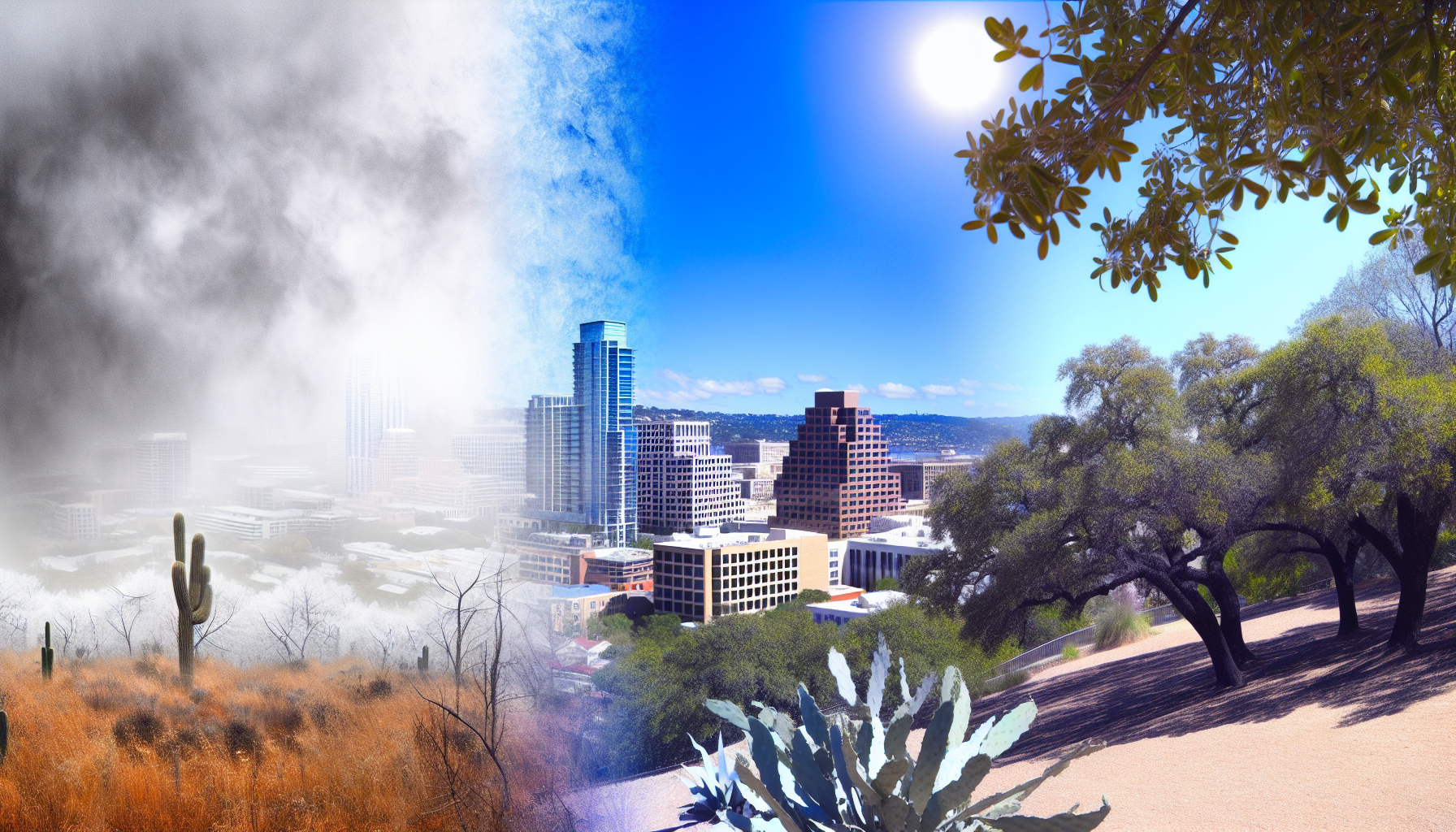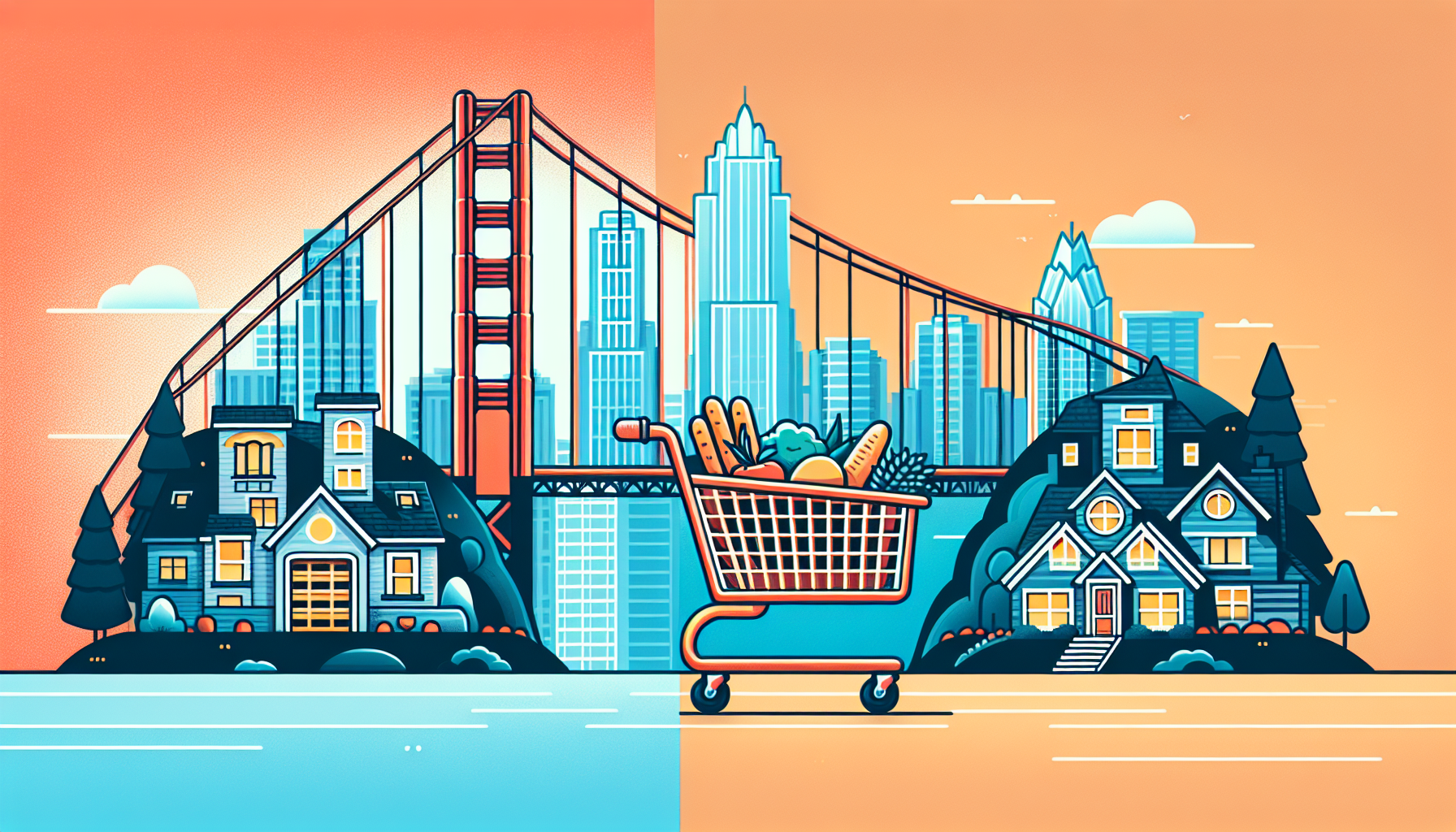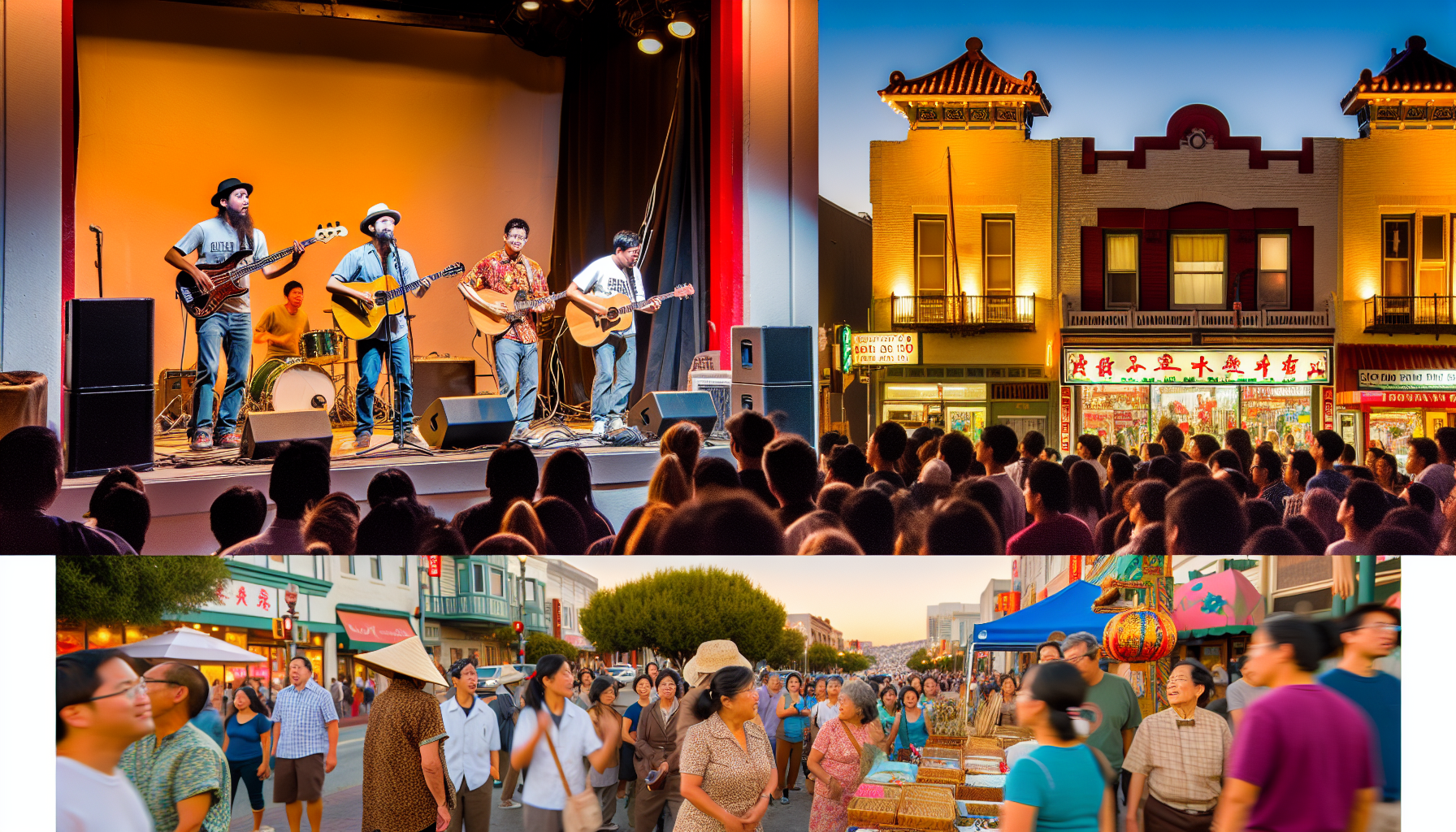Austin vs Bay Area: Comparing Lifestyle, Costs, and Opportunities in 2024

Mar 22, 2024
Choosing between Austin and the Bay Area? This piece cuts through the noise, comparing living expenses, tech job landscapes, and lifestyles in two of America’s most talked-about cities. We lay out the facts in our “Austin vs Bay Area” analysis, so you can make an informed decision on where to build your life or career.
Key Takeaways
- Austin, dubbed the ‘Silicon Hills’, is quickly becoming a tech hub with a mixture of established companies and startups, but still trails behind the Bay Area in terms of funding and success rates of its tech companies.
- Climate and cost of living are starkly different in Austin versus the Bay Area, with Austin having hot summers and cheaper living costs, while the Bay Area has milder weather and higher costs across consumer prices, rent, and groceries.
- Austin is touted as family-friendly and great for outdoor enthusiasts, offering a growing tech job market with competitive salaries, while the Bay Area provides a mature tech sector and a more extensive public transportation system.
Tech Industry Showdown

The city known as “Silicon Hills,” Austin, has been carving out a significant niche for itself within the tech sector, capturing interest from both burgeoning startups and established new tech companies. Big players like Palantir and Dropbox have shifted executives to this hub, while heavyweight firms including Facebook, Google, and Apple have bolstered their operations, thereby zeroing in on roles tied to risk/community operations, HR/recruiting, and general operations. This surge of activity is spawning an energetic tech employment landscape, with compensation rates particularly improving among mid-tier organizations.
Austin’s appeal isn’t limited to larger corporations. Its startup ecosystem enjoys international acclaim with a 21st global ranking. A robust local scene boasts startups across areas such as food tech, social & leisure activities, and hardware & IoT, illustrated by high-fliers like WP Engine. The diversity here is epitomized by entities ranging from John Deere to Snap Inc., along with AffiniPay, covering domains that include sophisticated machinery networks all the way through revolutionary camera innovations down to financial solutions.
Even so, when compared to the Bay Area (incorporating cities such as San Francisco and San Jose), Austin still trails behind significantly. The Bay Area hosts an impressive cohort of 105 unicorns, versus just four found in Austin. As a stronghold of venture capital accessibilities matched only by its skilled talent reservoirs coupled with historic roots deep within start-up heritage, the Bay Area continues to dominate over contenders like Austin regarding successful start-up ratios and aggregate investment scales.
In contrast, though, lies another picture: Intrapreneurial ventures including Fortress IO or Gopuff beside Apex Fintech Solutions reflect how expansive technology fields really are within urban confines outlining contemporary’s Austinite silhouette—and given analogous fundraising strides nearing those seen around Seattle turf—a robust challenger commences shaping up intent on redefining old-guard techno epicenters exemplified via places like Silicon Valley itself.
Where you choose ultimately hinges upon your personal career goals and aligned next steps involving individual expertise arsenals. Ponder whether enmeshing oneself into time-proven transformative innovation nexuses synonymous throughout recognizably stalwart sectors sounds enticing. Alternatively, could it be more tempting to join newer undertakings while witnessing evolution stages firsthand amidst confluence scenes fusing substantial name brands concurrently pioneering startups likewise?
Climate and Weather

Choosing between Austin and the Bay Area involves comparing their distinct weather patterns alongside considerations of the tech industry. For those who appreciate scorching summers paired with gently cool winters, Austin’s climate is ideal. The city often sees its hottest days in August when temperatures typically fluctuate from a high of 96°F to a low of around 75°F, accompanied by humidity stretching from mid-April until almost November’s end. Indeed, for heat enthusiasts, Austin could be seen as a slice of heaven.
Conversely, San Francisco within the Bay Area presents an alternate atmosphere characterized by extended periods of pleasant summer warmth followed by brief cold spells interspersed with rainfall during winter months. It’s unusual for temperature readings here to drop below 39°F or climb over 83°F. Thus this region caters nicely to individuals who favor more moderate climates.
The divergence in weather experiences doesn’t stop at mere temperature variations — both cities showcase contrasting meteorological dynamics that include:
- Clear skies prevailing in October across Austin provide optimal conditions for relishing outdoor pursuits.
- Overcast conditions become more common throughout San Francisco starting in late October and can persist up until approximately seven months onward.
- Windiness sets into San Francisco beginning in early February and extending through July. May stands out, with average wind velocities hitting about 9.6 miles per hour.
Ultimately, whether you take joy in basking in vibrant sunshine amid higher temperatures or if your tastes align closer towards cooler climates featuring variability might sway your choice toward either embracing life in Austin or settling down within the temperate embrace of the Bay Area.
Cost of Living Breakdown

Calculating financial implications is crucial when deciding on a new home base. The cost of living often dictates this choice, and compared to San Francisco, Austin tends to be more budget-friendly. Consumer expenses, including housing rents, are found to be 27.1% steeper in San Francisco than they are in Austin. If you bring rental costs into the equation, that disparity climbs: living in San Francisco will cost you an additional 33% over what it would cost in Austin for similar consumer goods and accommodation.
At the same time, the price gap extends within specific categories such as groceries and dining out, where prices soar by 40.8% and 15.6%, respectively, in favor of San Francisco’s higher expense bracket compared with those same commodities purchased or consumed within establishments situated in Austin. It’s important we look closely at these disparities, starting notably with housing prices, which contribute significantly to overall living expenses.
Housing Prices
The cost of housing significantly influences the overall cost of living, and when comparing San Francisco’s Bay Area with Austin, there is a pronounced disparity. In the Bay Area, expect to pay much more for median-priced single-family homes and condos. Here one million dollars might afford only a modest-sized condo or townhouse. Conversely, in Austin, that same million could yield an expansive and opulent home.
To illustrate this price variance more concretely, acquiring real estate in downtown San Francisco will run about $11,481.50 per square meter – nearly 57% steeper than Austin’s central city rate of $7,320.98 per square meter. Even on the outskirts of San Francisco, property values are substantial at $10,225.71 per square meter—triple what you’d spend compared to areas outside central Austin.
When exploring suburban regions like Round Rock adjacent to Austin where homes can be found below half a million dollars such affordability is virtually non-existent in Cupertino—a suburb within the Bay Area.
It must be acknowledged that prices in Austin’s housing market are climbing rapidly as demand increases due largely to people relocating from higher-cost locales including those located within the Bay Area itself – suggesting possible future alignment between these two cities’ real estate costs.
Ultimately opting for greater domestic space comes down to personal preference—with desire directed towards extra rooming capacity it makes sense to favor relocation nearer Round Rock while anyone open exchanging physical expansion against life amidst distinctive aspects brought forth through San Francisco residency maintaining financial readiness absorbing loftier accommodation investment would well consider bay area their likely new domicile.
Property Taxes
In Austin, TX, despite the more affordable housing market compared to San Jose in the Bay Area, property tax rates are notably higher. In Austin, homeowners face a rate of approximately $17,4 per $1,000 of their home’s value while in San Jose it’s only about $8.0 for the same amount. Texas compensates for its absence of state income tax with property taxes often ranging between 2% and 3% based on assessed valuation.
When considering Austin’s significantly less expensive real estate prices as opposed to those in the Bay Area — although with a steeper taxation rate — residents may end up paying comparable total amounts towards property taxes regardless if they reside in either location due to these differing factors.
These circumstances illustrate that even with elevated property tax rates present in Texas. Lower acquisition costs for homes can help balance out expenses sustaining Austin as an economically attractive alternative.
General Expenses
Housing and property taxes and various other typical expenditures play a role in the cost of living. For an apartment sized 85 m2, utility costs in San Francisco average about 10.7% more than those in Austin. Residents of San Francisco typically spend around $245.35 for essential services such as electricity, heating, cooling, water, and garbage collection, compared to Austin residents, who pay approximately $221.59.
The gap between transportation expenses is also noticeable. With gasoline prices being about 64% higher in San Francisco, this may affect both your regular commutes and leisure travel on weekends. When it comes to eating out at modestly priced restaurants, you can anticipate that meals will be roughly 25% pricier in the city of San Francisco than they are in Austin.
Not every service carries a higher price tag in San Francisco. When comparing mobile phone plans per month, we find them cheaper there at just $46.83 against Austin’s figure standing at $59.76, while internet fees tend slightly towards the steeper side for Austinites—at $6633—compared to their counterparts from SF who pay only a few cents less: namely [$62].88. These disparities amongst general spending categories complement differences seen within housing as well as property tax brackets, thus affecting each city’s overall cost index for living.
Cultural Experiences

When considering a city beyond the cost of living, the cultural offerings play an essential role. Austin holds the esteemed title of ‘Live Music Capital of the World®,’ making it an attraction for those who appreciate music. The presence of live music is woven into everyday life in Austin, with performances taking place in unique locales including airport terminals and even within grocery stores. This dedication to musical entertainment is showcased through a dynamic nightlife filled with live tunes at many bars and concert venues throughout the city.
Nestled within South Austin lies The Oasis on Lake Travis, renowned for its breathtaking tiered sunset views alongside its own slice of the local live music scene. This has aptly earned this venue acclaim as Texas’ very own ‘Sunset Capital.’’
Outdoor Adventures

Enthusiasts of the great outdoors will find a treasure trove of activities in both the Bay Area and Austin. The area to the north of Austin boasts Lake Travis, known as an epicenter for diverse outdoor pursuits. This lake is surrounded by over 50 establishments offering boat rentals, includes attractions such as Waterloo Adventures—which showcases a sprawling 600-foot water-based obstacle course—and hosts Texas’ most extensive and swiftest zipline, courtesy of Lake Travis Zipline Adventures.
Yet there’s more to explore beyond aquatic adventures at Lake Travis. In Austin itself, there are picturesque pathways including Barton Creek Greenbelt, Mount Bonnell, and Violet Crown Trail, which provide not only hiking but also cycling opportunities, jogs, or leisure strolls against backdrops filled with verdant hillside scenery replete with waterfalls and streaming creeks.
Complementing these trails are other natural gems like Lady Bird Lake, situated in Central Austin—amidst panoramic views characteristic of Texas Hill Country—that enhance this city’s charm for those who thrive on open-air escapades.
Indeed, if your passions range from sailing across lakes to trekking through nature or immersing yourself in breathtaking vistas, The vast array of recreational options offered by Austin assures that aficionados won’t be left wanting.
Transportation and Traffic
The city’s transportation network and the conditions of traffic in Austin can have a significant impact on your daily life, from commuting to work to planning leisure activities. In this context, Austin offers:
- A comprehensive public transportation system that includes nearly 3,000 bus stops along with light rail services
- This system provides roughly 140,000 trips every day
- It has the highest usage per person within Texas.
Conversely, the San Francisco Bay Area is known for its highly developed public transit infrastructure. The Municipal Railway in San Francisco operates numerous buses and light rail lines, while BART links key urban areas at speeds reaching up to 80 mph.
Ultimately, both Austin and the Bay Area present effective options for public transportation. The system covering the San Francisco Bay Area is broader and capable of faster connections between major cities. Your decision might be influenced by what your specific needs are when it comes to commuting or personal travel preferences.
Family-Friendly Living
Consider relocating with your loved ones. Austin stands out as an outstanding choice for a family-friendly city. It boasts reasonable living costs, and reputable educational institutions, and enhances the quality of life for families. Consequently, Austin appeals to those in search of a congenial environment suited for family life, encompassing current Austin residents contemplating relocation within the metropolis.
Beyond these pragmatic advantages lies another layer that defines what makes Austin special: its pulsating music scene along with plentiful cultural opportunities and outdoor activities provide amusement and valuable experiences for every family member to cherish.
Remote Work Impact
Following the global pandemic, the surge of remote work has reshaped the tech job market landscape. This shift has significant implications for Austin, as compensation for onshoring roles in the city is expected to increase. This is not only due to the rising cost of living but also because Bay Area employees are moving to Austin while maintaining their higher salaries.
As a result, the compensation levels in Austin are predicted to resemble those seen in Seattle, another major tech hub with the advantage of no state income tax. This could potentially make Austin even more attractive to tech professionals looking for competitive salaries without the high cost of living found in cities like San Francisco.
However, the potential cost savings that employers could reap by onshoring to Austin are anticipated to reduce due to the escalating compensation levels. This underscores the complex interplay between remote work, compensation levels, and the cost of living, further complicating the decision between Austin and the Bay Area.
State Politics and Policies
The political atmosphere of a city, shaped by state politics and decisions, significantly impacts the quality of life for its residents. In Texas, recent legislative sessions have brought changes across multiple sectors, including:
- Enhancements to school security
- Revisions in mail-in voting procedures
- Adjustments to firearms regulations
- Modifications concerning LGBTQ rights
In an effort to bolster fossil fuel use within the state, Texas lawmakers provided incentives designed to encourage the construction of new natural gas power stations while refraining from enacting more stringent policies on renewable energy sources.
On another note, California has been active in advancing progressive measures such as:
- Revoking a previous decision that would limit Medi-Cal contracts to only three organizations. We are now expanding this number with Blue Shield and Community Health Group, set for inclusion under stricter care standards starting in 2024.
- Enacting two innovative laws aimed at boosting affordable housing projects within disused commercial areas.
- Contemplating legislation that would ease restrictions on building completely affordable housing projects on lands held by religious entities and nonprofit educational institutions.
Colleges across California are preparing themselves for prospective federal mandates intending greater enforcement against discrimination based on gender identity among transgender and nonbinary students—a move that complements existing protections mandated by state law. The University of California academic personnel have come to an agreement after six weeks on strike. The provisional accord guarantees improved pay rates alongside enhanced benefits packages impacting tens of thousands—potentially setting a precedent affecting university workers throughout the United States.
In summarizing your residency choices between Austin’s conservative approach and the Bay Area’s liberal tendencies, they could hinge considerably upon their diverse political climates.
Summary
Deciding to settle in either Austin or the Bay Area can be a challenging choice, as both locations have their own distinct draws and benefits. One might find themselves torn between the affordability and rapidly expanding technological landscape of Austin versus the innovative startup milieu and cultural heterogeneity that characterize the Bay Area. Factors such as career ambitions, personal preferences for weather, cost-of-living expenses, passion for culture, recreational pursuits, transportation options, amenities for families with children, considerations about working-from-home setups, and political leanings will ultimately play pivotal roles in this decision.
Ultimately, it boils down to identifying which city best resonates with your core beliefs, desired lifestyle pace, and professional objectives. Whether your heart is set on embracing life in Austin—the celebrated ‘Live Music Capital of the World®’—or immersing yourself within Silicon Valley’s dynamic pulse in the bay area, each offers fertile ground where individuals can flourish personally and professionally while maintaining an enviable standard of living.
Frequently Asked Questions
Is Austin cheaper than the Bay Area?
Certainly, the cost of living in Austin is more affordable when compared to the Bay Area, with a particular distinction in housing prices where San Francisco’s rates are approximately 273% greater.
As such, there will be a noticeably substantial difference in living expenses.
Is Austin bigger than SF?
Certainly, when comparing population density, San Francisco exceeds Austin with a density of 6,898 individuals per square kilometer. In contrast, Austin has a notably lower density of 1,007 people per square kilometer.
Despite this disparity in density, it’s important to note that Austin is an emerging city experiencing significant growth in both its suburban areas and employment prospects.
Is Austin the next Bay Area?
While Austin has risen as a significant center for technology, it still does not produce the volume of venture capital-backed startups that Silicon Valley does. Hence, it is not considered an equivalent rival to the Bay Area’s tech stronghold.
How does the tech industry in Austin compare to the Bay Area?
Although Austin’s technological sector is expanding, boasting significant enterprises and a burgeoning startup ecosystem, the Bay Area continues to outpace in terms of successful startups and surpass it with higher overall levels of funding.
Which city has a higher cost of living, Austin or the Bay Area?
To Austin, the cost of living in San Francisco and the wider Bay Area is markedly elevated, encompassing expenses related to consumer items, groceries, and dining out.
- Categories
- City Guides |
- Relocation Guides



